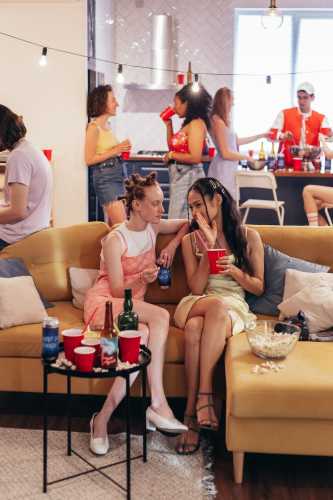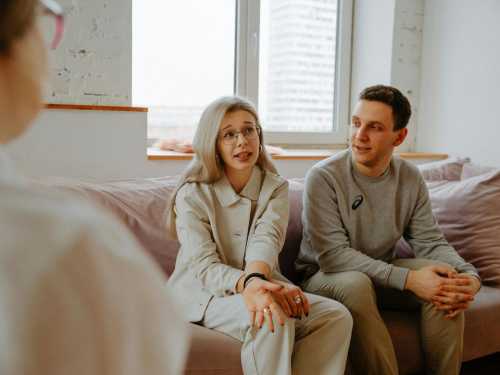
DUBAI, United Arab Emirates — Who says you cannot reach for the moon? A proposed $5 billion real estate project wants to take skyscraper-studded Dubai to new heights — by bringing a symbol of the heavens down to Earth.
Canadian entrepreneur Michael Henderson envisions building a 274-meter (900-foot) replica of the moon atop a 30-meter (100-foot) building in Dubai, already home to the world's tallest building and other architectural wonders.
Henderson's project, dubbed MOON, may sound out of this world, but it could easily fit in this futuristic city-state. Dubai already has a red-hot real estate market, fueled by the wealthy who fled restrictions imposed in their home countries during the coronavirus pandemic and Russians seeking refuge amid Moscow’s war on Ukraine.
And even though a previous booms-and-bust cycle saw many grand projects collapse, Henderson and others suggest his vision, funded by Moon World Resorts Inc., where he is the co-founder, might not be that far-fetched.
“We have the biggest ‘brand’ in the world," Henderson told The Associated Press, alluding that the moon itself — the heavenly body — was his brand. “Eight billion people know our brand, and we haven’t even started yet."
The project Henderson proposes includes a destination resort inside the spherical structure, complete with a 4,000-room hotel, an arena capable of hosting 10,000 people and a “lunar colony" that would give guests the sensation of actually walking on the moon.
The MOON would sit on a pedestal-like circular building beneath it and would glow at night. Henderson discussed the project at the Arabian Travel Market earlier in May in Dubai.
Already, artist renderings commissioned by Moon World Resorts have played with the location for his MOON — including at the Burj Khalifa, the world's tallest building at a height of 828 meters (2,710 feet). Others have placed it at the Dubai Pearl, a long-dormant project now being destroyed near the man-made Palm Jumeirah archipelago, and on its unfinished sister, the Palm Jebel Ali.
The Pearl and the Palm Jebel Ali represent two “white elephant” projects left over from the 2009 financial crisis that rocked the sheikhdom and forced Abu Dhabi, the capital of the United Arab Emirates, to provide Dubai with a $20 billion bailout.
Now nearly 15 years later, Dubai largely has turned around. Rents on average across Dubai are up 26.9% year-on-year, even with anti-price-gouging protections. Dubai saw 86,849 residential sales last year, beating a previous record of 80,831 from 2009.
“Dubai is in a completely different world compared to" 2009, said Lewis Allsopp, the CEO of the prominent Dubai real estate agency Allsopp & Allsopp. Launched products are "selling out on the spot.”
Inflation and interest rate hikes around the world have led to fears of a global recession. The UAE’s currency, the dirham, is pegged to the dollar, meaning it has followed lock-step the hikes imposed by the Federal Reserve.
But cash still remains king for Dubai buyers, with fourth-fifths of transactions paid in currency without financing in 2022, said Faisal Durrani, the head of Middle East research at real estate agency Knight Frank.
“You could argue that the interest rate hikes that are taking place, to an extent the market is a little bit shielded from that given the fact that so much of the transactional activity has been driven by cash,” Durrani said.
Other major projects are moving ahead.
Nakheel, the state-owned developer behind the Palm Jebel Ali, has relaunched development plans for it. The developer also unveiled a multibillion-dollar plan to build 80 resorts and hotels on the man-made Dubai Islands, though it remains largely empty and under the flight path of the nearby Dubai International Airport, the world's busiest for international travel.
The MOON project also includes space for a possible casino as well. Gambling remains illegal in the UAE, a federation of seven hereditarily ruled sheikhdoms on the Arabian Peninsula. However, major brands like Caesar's Palace already exist or hope to build in Dubai. Wynn Resorts plans to build a $3.9 resort in Ras al-Khaimah north of Dubai with gambling to open in 2027 — meaning a change to the law is likely to come.
Like other high-profile, eye-catching marvels, the MOON could fit well into “the legitimacy formula of Dubai’s ruling elite,” said Christopher Davidson, a Middle East expert who wrote the recent book “From Sheikhs to Sultanism.” Dubai also hosts the UAE's space center, which has sent a probe to Mars and unsuccessfully tried to put a rover on the moon.
“They can be seen as a non-democratic elite but nonetheless believe strongly in science and progress — and that’s ultimately very legitimizing and a megaproject like this would seem to tick all of those boxes,” Davidson said.
Henderson’s plan would go a step further than other globe-shaped projects, such as the MSG Sphere, a $2.3 billion dome blanketed by LED screens, that is set to open in Las Vegas later this year.
His structure would be fully spherical, and could be illuminated alternatively as a full, half or crescent moon.
The brightness may not go down well with potential neighbors — plans to build another MSG Sphere in London were halted after residents protested the significant light pollution and disruption the structure would cause.
“It’s hard to please everybody," Henderson acknowledged. "You might need dark curtains.”
___
Associated Press writer Jon Gambrell in Dubai, United Arab Emirates, contributed to this report.
Sourse: abcnews.go.com






